|
Mitsubishi A6M5c Zero Fighter (Zeke) Type 52 Hei
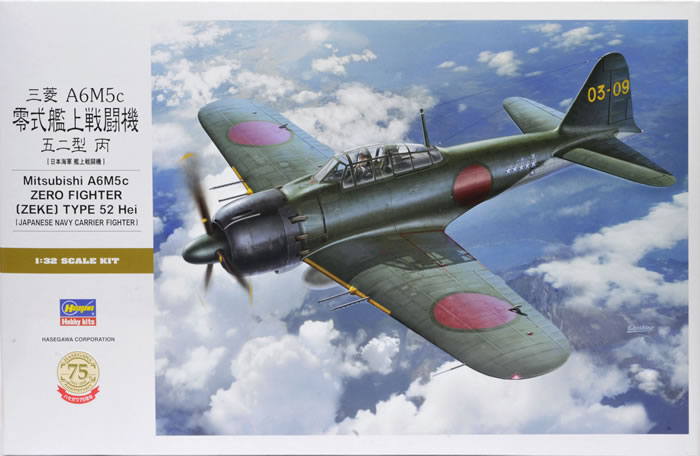
Hasegawa, 1/32 scale
S
u m m a r y |
| Catalogue Number: |
Hasegawa Kit No. ST34 - Mitsubishi A6M5c Zero Fighter (Zeke) Type 52 Hei |
| Scale: |
1/32 |
| Contents and Media: |
132 parts in grey coloured plastic; 13 parts in flesh coloured plastic (pilot figure);18 parts in clear; markings for two aircraft |
| Price: |
5,000 Yen - Japanese Recommended Retail Price
GBP£54.99 (£45.83 Export Price) plus shipping available from Hannants |
| Review Type: |
FirstLook |
| Advantages: |
Crisp surface textures, high quality mouldings; good level of detail; simple parts breakdown; poseable canopy. |
| Disadvantages: |
Some ejector pin circles. |
| Conclusion: |
Hasegawa has delivered a nicely detailed kit of the A6M5c Zero that should not present any obstacles to the modeller. This is classic Hasegawa 1/32 scale - straightforward design, crisp fine surface textures, decent detail, fuss-free, no gimmicks. Recommended. |
Reviewed by Brett Green

Hasegawa's1/32 scale A6M5c Zero will be available online from Squadron.com
The Mitsubishi A6M "Zero" is a long-range fighter aircraft, manufactured by Mitsubishi Heavy Industries, and operated by the Imperial Japanese Navy from 1940 to 1945. The A6M was designated as the Mitsubishi Navy Type 0 Carrier Fighter, or the Mitsubishi A6M Rei-sen. The A6M was usually referred to by its pilots as the "Reisen" (zero fighter), "0" being the last digit of the Imperial year 2600 (1940) when it entered service with the Imperial Navy.
The official Allied reporting name was "Zeke", although the use of the name "Zero" was later commonly adopted by the Allies as well. When it was introduced early in World War II, the Zero was considered the most capable carrier-based fighter in the world, combining excellent maneuverability and very long range.
The Imperial Japanese Navy Air Service ("IJNAS") also frequently used the type as a land-based fighter. In early combat operations, the Zero gained a legendary reputation as a dogfighter, achieving the outstanding kill ratio of 12 to 1, but by mid-1942 a combination of new tactics and the introduction of better equipment enabled the Allied pilots to engage the Zero on generally equal terms.
By 1943, inherent design weaknesses and the failure to develop more powerful aircraft engines meant that the Zero became less effective against newer enemy fighters, which possessed greater firepower, armor, and speed, and approached the Zero's maneuverability.
Although the Mitsubishi A6M was outdated by 1944, design delays and production difficulties of newer Japanese aircraft types meant that it continued to serve in a front line role until the end of the war.
During the final year of the War in the Pacific, the Zero was also adapted for use in kamikaze operations. During the course of the war, Japan produced more Zeros than any other model of combat aircraft.*
I first saw Hasegawa's 1/32 scale A6M5c Zero while I was at the Shizuoka Hobby Show this May. I was impressed.
After the show one day, I took the short taxi ride to Rainbow Ten's shop. This iconic model store no longer has an international online presence, but the shop itself is still impressive with its large range of kits and hobby products.
Rainbow Ten had the new Hasegawa Zero on sale, but I managed to resist the temptation, deciding that I really did not have space in my modest sized bag to bring the kit home.
Back in Sydney, I was struck by a nagging case of non-buyer's remorse and wound up ordering the kit online at a bargain price.
Hasegawa's all-new 1/32 scale A56M5c Zero Type 52 Hei comprises 132 parts in grey plastic (13 marked not for use), 13 parts in flesh coloured plastic (for a seated pilot figure) and 18 parts in clear.
The kit has an almost nostalgic feel to it. It very much follows the formula of their classic 1/32 scale releases starting with the Messerschmitt Bf 109 G-6 in 2001, as well as their Fw 190s, P-40s, P-47, Ki-44, Ki-61, Raiden, Stukas and more.
Hasegawa's new Zero features the same shiny plastic, fixed control surfaces, subtle surface textures and simple parts breakdown. Unlike some of its earlier counterparts, the fuselage does not have any inserts, so fit should be pretty much trouble free.
Surface textures mainly comprise of crisply recessed panel lines. You won't find rows of rivets here - strictly old school (which is not necessarily a bad thing in my opinion). Rib tape and stitching texture on fabric control surfaces are really well done.
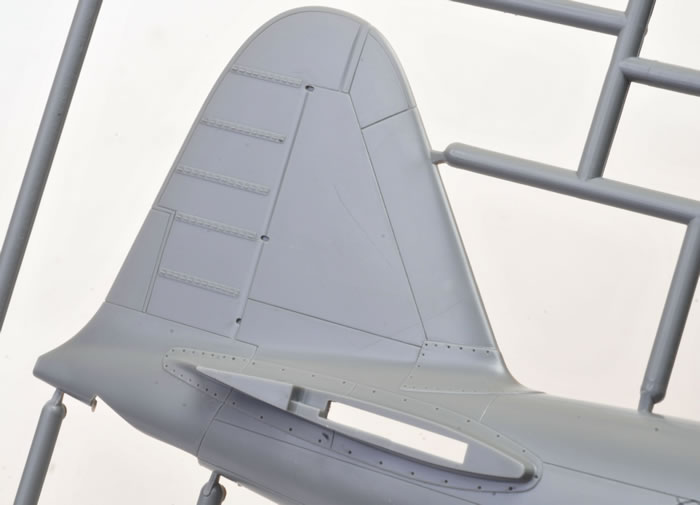
Hasegawa seems to traditionally reserve its best detail efforts for Japanese subjects and this Zero reinforces that impression.
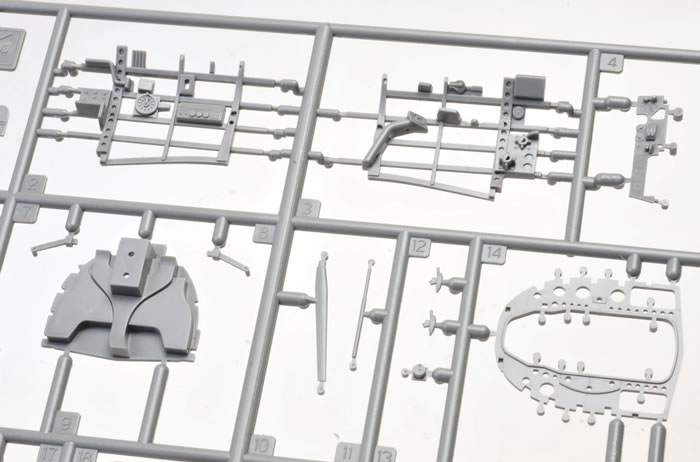
The cockpit looks great with separate framework for the sidewalls, separate consoles, boxes, throttles and handles, cowl gun, pilot's seat with recessed life raft and a well moulded instrument panel with raised dials. The decal sheet includes clusters of instrument dials as an option, or you may prefer to paint the panel.
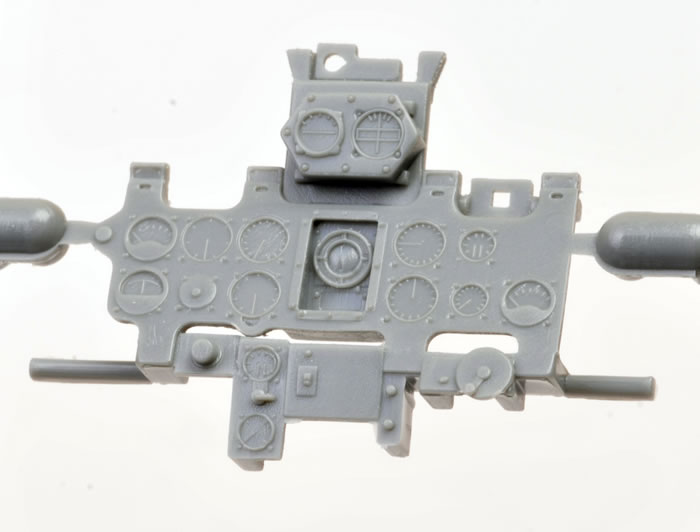
A seated pilot figure is also included with the choice of three heads. One of these is wearing an oxygen mask with a hose.
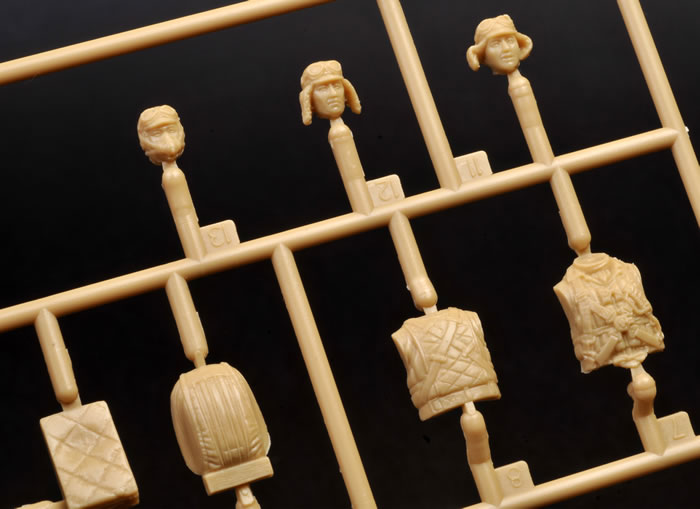
The fuselage is reinforced with two stout structural bulkheads plus a central locating aid for the horizontal tail planes sandwiched between the port and starboard halves.
The lower wing boasts a wing spar that spans the full width of the wheel wells. The upper wings feature separate clear navigation lights. Wing tip lights are separate clear parts too.
The undercarriage is quite simple but does include separate hydraulic lines and oleo scissors. Alternative main gear covers are supplied for raised or lowered undercarriage.
The engine and propeller assembly is made up from 12 parts and looks nice, although you might like to add an ignition harness in this large scale. The engine cowling is moulded in one piece with separate sets of cowl flaps. A choice of open or closed cowl flaps is offered.
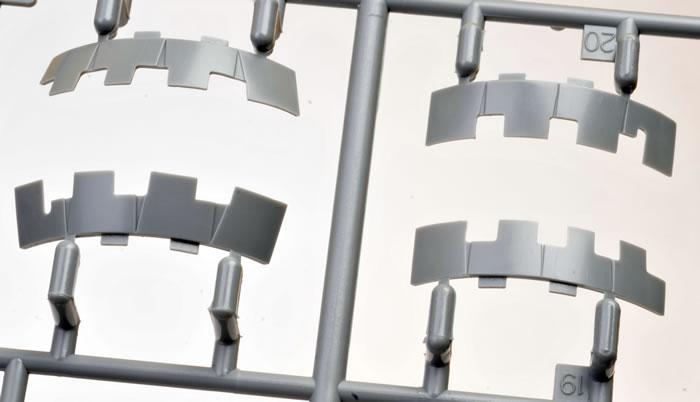
The canopy is supplied in three parts. The centre sliding section may be posed either open or closed.

The clear parts are thin and free from distortion.
Instructions are clearly laid out in 14 steps over 12 pages in typically clear Hasegawa style.
Markings
Markings are supplied for two A6M5c Zeroes:
-
203rd Naval Flying Group, 303rd Fighter Squadron. Flown by NAP 1/C Takeo Tanimizu, Kagoshima A.B., June 1945
- 252nd Naval Flying Group, 311th Fighter Squadron. Flown by Ensign Tetsuzo Iwamoto, Mobara A.B., February 1945
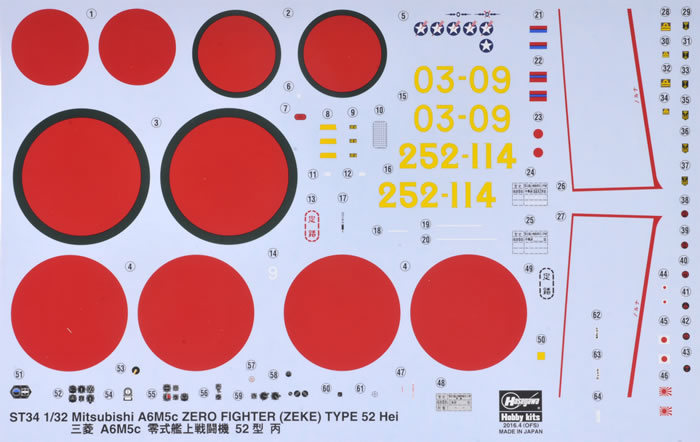
Printing, colours and registration are perfect on my sample.
Hasegawa has delivered a nicely detailed kit of the A6M5c Zero that should not present any obstacles to the modeller. This is classic Hasegawa 1/32 scale - straightforward design, crisp fine surface textures, decent detail, fuss-free, no gimmicks.
Recommended.
* Historical summary courtesy of Wikipedia.
Kit purchased by the reviewer.
Review Text Copyright © 2016 by
Brett Green
Page Created 1 September, 2016
Last updated
2 September, 2016
Back to HyperScale Main Page
Back to Reviews Page |
